History of obsolete car audio, part 1: Early radio
To read more of Rob’s five-part Obsolete Car Audio series, click here.
The human need for music is inarguably strong. These days, if you’re cruising in your Tesla and you want to hear My Green Tambourine, you just say, “Play My Green Tambourine,” and your stereo does exactly that. So it’s difficult to imagine the lengths to which early enthusiasts went so that we could all hear music in our cars.
Let me tell you about a few passionate pioneers who succeeded, as well as a few whose efforts died on the vine.
First is first
If you really want to get geeky, the first “car radio” appears to have been built by telegraph inventor Guglielmo Marconi. In 1901, he installed a telegraph into a Thornycroft steam-powered wagon to create a mobile military message center. The antenna looks like it is capable of launching a small child into low Earth orbit. Since it received and played only telegraph messages, not sound or music, it’s a little outside the envelope of “car audio,” but, hey, first is first.
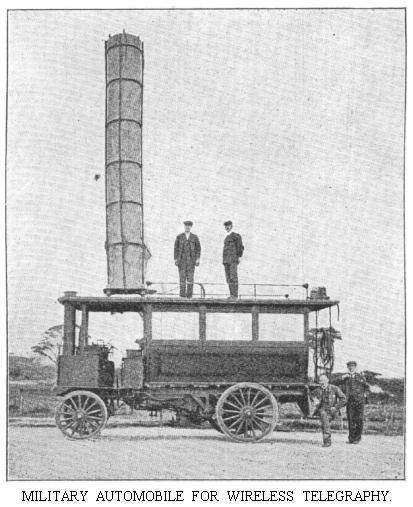
The first (laughable) attempts at in-car radio
When broadcast radio was established in many cities in the United States in the early 1920s, listening to music on the radio became a leisure activity. Almost from the get-go, people began trying to extend that capability to cars. Initially, most home radios were battery-operated, so “installing” one in a car consisted of little more than laying it on the back seat.
However, as home radios progressed, they began being powered not batteries but by home electric power, and their vacuum tubes were not as easily converted to running off battery power. Nonetheless, enthusiasts began disassembling home radios and stuffing the components wherever they’d fit, including under the seats and on the running board.
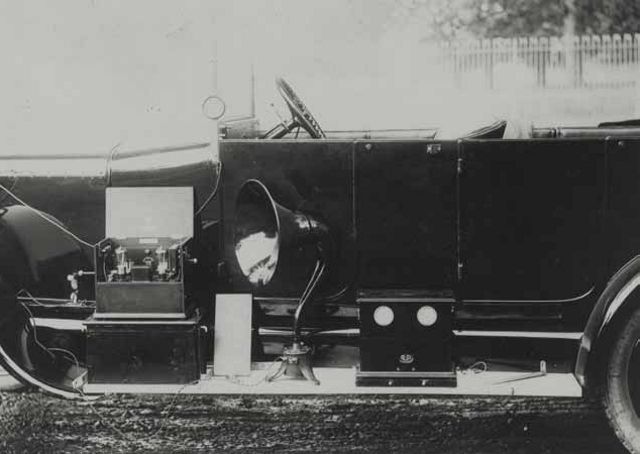
Due to the paucity of radio stations, a large stationary antenna was needed for effective reception in a car. Early photos show some laughable antenna configurations, resembling a clothesline hosted by poles attached to the front and rear bumpers. Slightly better iterations involved weaving antenna wire into the roof or running it beneath the car.

The first dedicated car radios
Reports differ on when the first dedicated radios were installed in cars. There are newspaper accounts of Chevrolet offering the “Radio Sedan” in 1922, apparently including a Westinghouse radio that utilized a rooftop antenna, batteries beneath the front seats, and large horn speakers behind the rear seats, but it’s unclear whether it was actually produced or was a one-off publicity stunt. The first radio as a factory-installed option in a regular production car may have been in 1923 by the Springfield Body Corporation, but it, too, was likely a hodge-podge adapted from a house radio.
There is also debate over which manufacturer deserves the distinction of being the first to offer a car-specific radio, and it involves one of the most storied names in electronics. William Heina, of the U.S. Heinaphone Company, appears to have been granted the first patent for the installation of radios in cars. Heinaphone’s car radios were called “Transitones.” In 1927, the Automobile Radio Corporation (ARC) bought Heinaphone. ARC was soon purchased by the Philadelphia Storage Battery Company, which was mainly a supplier of batteries for electric vehicles, and is better known by the name Philco. Transitone radios continued to be produced for many years. A very early Transitone is shown below. The vacuum tube chassis occupies most of the under-dash area.
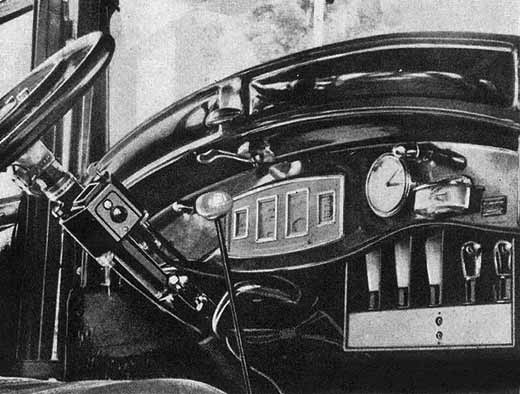
However, on a parallel path with Transitone, inventor and engineer William Lear (later of Learjet fame) played a central role in the development of car radio. Paul Galvin, at the Galvin Manufacturing Corporation in Chicago, sold a battery eliminator device that allowed battery-powered home radios to be run on standard house current. However, because more and more home radios were running on house wiring, Gavlin was losing his market and was looking for a new product.
There’s a great story, possibly apocryphal, about Bill Lear and his friend Elmer Wavering.The two were parking with their girlfriends at Lookout Point in Quincy, Illinois, and watching the sunset. One of the woman reportedly said that the evening was romantic, but would be more so if there was music to listen to. Of such necessity is invention born. It’s one of those stories that’s so good, it almost doesn’t matter if it’s true.
Lear and Wavering began working on a practical car radio, trying to systematically address the electrical interference issues that plagued the early systems (they could not be operated with the engine running due to ignition noise). When they had it working, they took it to Paul Galvin. Together, they developed the not entirely memorably named “5T71,” what many regard as the first functional purpose-built car radio.

Lear and Wavering installed the new radio in Galvin’s Studebaker. Galvin drove the car from Chicago to Atlantic City and debuted the radio at the June 1930 Radio Manufacturer’s Show. Unfortunately, he had not paid for a display booth. So he parked the car at the entrance to the Atlantic City pier and demonstrated to passers-by that the radio received a clear signal with the engine running. By the end of the show, Gavlin had enough orders to begin production.
Because the best-known music device of the time was the Victrola phonograph, Gavin decided to mash up “motor” and “Victrola” and renamed the 5T71 radio the “Motorola” to give the connotation of music in motion. Gavin Manufacturing eventually changed the name of the company itself to Motorola in 1947. Yes, that Motorola.
But just because we label the Motorola as the first “practical” car radio doesn’t mean its installation was easy. It was reportedly a two-day job. A 28-page manual reportedly required disassembly of the dashboard and holes cut in the floor for the radio’s batteries (which, at that time, were separate from the car’s battery in order to eliminate noise).
Note that these radios were not cheap—the Motorola cost about $110 without installation. This was at the time when a new Ford Model A cost about $600, and the Great Depression was looming. The fact that people paid to be on the bleeding edge of this technology is a testament to how basic a human need that music really is. That, and if you believe the story about Lear and Wavering, men’s desire to impress women.
There’s a fascinating symmetry between these early radios and the design of modern complex car audio systems in that both the very old and very new systems have their components spread throughout the car. This is in contrast to much of the trajectory of car audio from the 1950s through the early 1980s where everything except the speaker was contained in a single box. With the advent of power amplifiers and subwoofers in the 1980s and CD changers in the 1990s, the electronics again became distributed throughout the car, and a new term arrived to describe the portion that you actually laid your hands on—the “head unit.” With this in mind, the Motorola 5T71 may have been the first production car audio system with a “head unit”—a tuner that was bolted to the steering column.
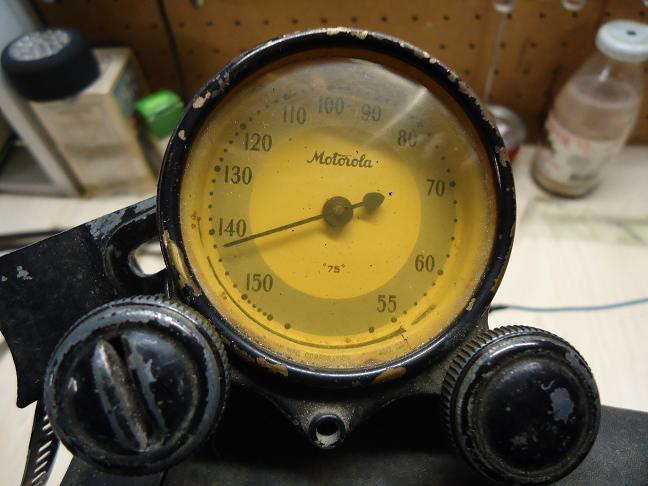
Although the Great Depression slowed refinement and adoption of car radio, it still progressed at a surprising pace through the 1930s. In fact, enough cars were acquiring radios that there was concern about it posing a safety hazard due to distracted driving (sound familiar?) or music lulling drivers to sleep. The Radio Manufacturers Association countered with the argument that reports on weather and road conditions increased safety rather than compromising it, and that listening to radio programs helped to keep drivers awake. For the most part, the anti-radio effort went nowhere.
The last of the basic noise problems, allowing the radio to be powered directly from the car battery, were solved by about 1935, greatly simplifying installation. Motorola introduced the first radio with push-button station presets in 1936. By the end of the 1930s, about 20 percent of cars in the United States were fitted with radios. By 1950, most car radios had all of their electronics in a single box that was mounted behind the dashboard, with an external speaker the only other component. They were well-integrated into the dashboard and formed an integral part of the car’s interior design.
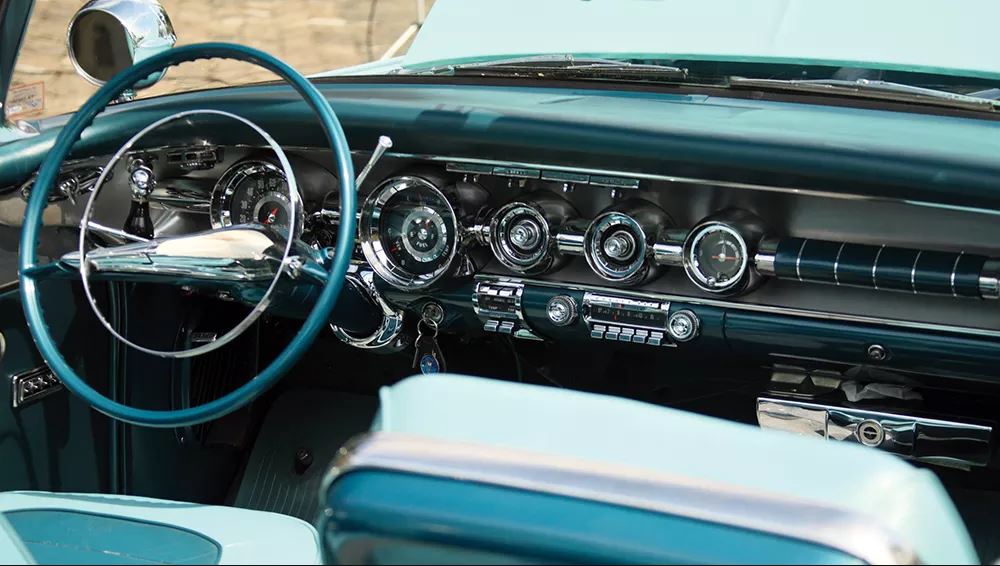
However, what was behind the dashboard was still pretty big; the internals of these radios were still powered by vacuum tubes.
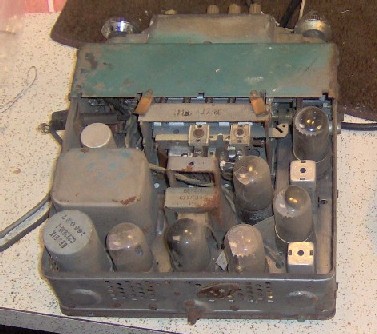
Through the 1950s, the size of the radio box shrunk and functionality improved. The legendary Becker Mexico, introduced in 1953, was arguably the first high-end car audio system, featuring FM stereo and a station scan function that, together, allowed a greater selection of music. However, unless you drove a Mercedes, you didn’t have a Becker Mexico, and most car radios did not get FM and station scan until the early 1960s.
This meant that, if you wanted to select your own music, you needed something else. Something quite surprising.
Next week: In-car record players.
***
Rob’s latest book, The Best of the Hack Mechanic™: 35 years of Hacks, Kluges, and Assorted Automotive Mayhem, is available on Amazon here. His other seven books are available here on Amazon, or you can order personally inscribed copies from Rob’s website, www.robsiegel.com.
Check out the Hagerty Media homepage so you don’t miss a single story, or better yet, bookmark it. To get our best stories delivered right to your inbox, subscribe to our newsletters.


Was Paul’s surname Galvin, Gavlin, or Gavin? Because all three spellings appear in the article.
does anyone Know anything about this Vintage car radios with preset stations on the Bakelite face WCBS WTAX KMOX WBBM WGN WMAQ WITH ATTACHED SPEAKER ?
Kudos on the fascinating exploration of the “History of Obsolete Car Audio, Part 1: Early Radio.” Your meticulous dive into the evolution of car audio systems is both enlightening and nostalgic. It’s incredible to witness how far we’ve come since the early days of car radios. Your attention to detail and historical context provide readers with a captivating journey through the evolution of in-car entertainment. As an audiophile and history enthusiast, I’m eagerly anticipating the subsequent parts of this series. Thank you for shedding light on the often overlooked but essential aspect of automotive history with such enthusiasm and expertise.
I own what I think is a mid-30s Emerson auto radio, model E128, that I would like to fully restore and install in my 1934 REO Flying Cloud sport convertible. The dial control head mounts to the steering column. Does anyone know in what year Emerson Radio and Phonograph started to market car radios? What was the first Emerson car radio model designation? I thus far have not gotten a response from the current Emerson Corp.